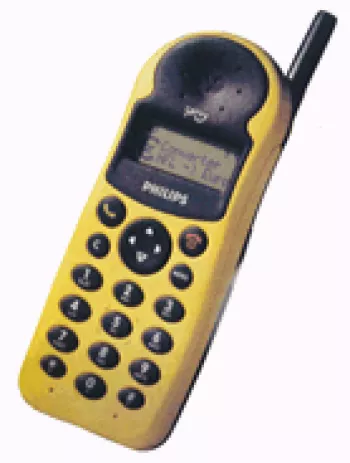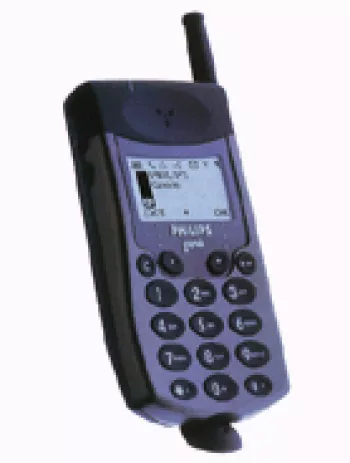
Network and Connectivity
The Philips 355 is a feature phone that was launched in the first quarter of 2004. This device operates on GSM technology, with support for 2G networks using GSM 900 and 1800 bands. The phone provides GPRS Class 10 for limited internet connectivity, although it does not support EDGE. Due to its launch date, there is no support for Wi-Fi, Bluetooth, or GPS, which limits the phone's connectivity features significantly compared to modern standards. The absence of these features makes it clear that the Philips 355 was designed primarily for basic communication rather than advanced mobile internet activities.
Design and Build
The device features a compact and lightweight design, with dimensions measuring 106 x 46 x 17 mm and a weight of 82 grams. This makes it easy to carry and fit into pockets or small bags. The SIM card used is a Mini-SIM, which was standard for mobile devices of that era. The design is simplistic, prioritizing function over form, which is typical of many early 2000s feature phones. It's available in four colors: Turquoise Ocean, White Antarctic, Black Forrest, and Blue Gloss, giving users some variety in their choice of aesthetics.
Display
The Philips 355 is equipped with a CSTN display that supports 65K colors. The screen resolution is 128 x 128 pixels, which allows for 8 lines of text or graphical content. This display format was typical for feature phones at the time, as it was sufficient for basic navigation, calling, and messaging. Although the display technology and resolution are considered extremely limited by today's standards, they were adequate for the typical user requirements when the phone was initially released.
Camera
The phone is equipped with a single CIF camera with a 0.1 MP resolution. This camera allows users to take basic photos, though it's important to note that the image quality would have been minimal given the technological limitations of the time. The camera does not support video recording, which further emphasizes the device's basic functionality focused on communication and simple multimedia needs.
Memory and Storage
The internal memory of the Philips 355 is limited to 8MB with no option for storage expansion via a card slot. This restricts users from storing large amounts of data on the device, such as music files or a large number of photos. However, given its purpose and time of release, the memory allocation is in line with typical usage patterns, which were predominantly focused on storing contacts and text messages. The phone can save up to 300 contacts with multiple fields, and it supports photo call functionality for assigning photos to contacts, which was a relatively novel feature during the phone’s release.
Sound and Additional Features
The Philips 355 does not include a loudspeaker or a 3.5mm audio jack for earphones. This indicates a design that did not prioritize multimedia playback or audio entertainment. Alert types available on the phone include vibration and downloadable polyphonic ringtones. Although it lacks advanced communication features such as Bluetooth or infrared, it supports SMS, EMS, and MMS messaging formats, as well as a WAP 1.2.1 browser for accessing minimal web content. The device also includes basic gaming and Java support, giving users limited options for entertainment.
Battery Life
Equipped with a removable Li-Ion battery, the Philips 355 offers up to 400 hours of standby time and up to 5 hours of talk time. This battery life is sufficient for typical use cases of the time, as smartphones with intensive battery usage had not yet become widespread. The ability to remove and replace the battery adds to the phone’s practicality, allowing users to easily swap out batteries if necessary.
Conclusion
The Philips 355 is a prime example of early 2000s mobile phone design, focusing on fundamental communication features while offering limited additional functionalities. Its lack of advanced connectivity options and multimedia capabilities underscores its market positioning as a basic feature phone. Despite these limitations, it provides adequate performance for calling and messaging, which were the primary requirements of mobile phones at the time. The device's design, memory, and battery performance align well with the standards and consumer expectations of its release period, providing a reliable yet straightforward mobile communication solution.
Key Features of Philips 355
- Lightweight design with a weight of only 82 g (2.89 oz).
- Compact dimensions: 106 x 46 x 17 mm, making it easy to carry.
- CSTN display with 65K colors and a resolution of 128 x 128 pixels.
- Supports GSM 900/1800 bands with GPRS Class 10 technology.
- Phonebook with capacity for 300 entries, supporting photo call.
- Provides SMS, EMS, and MMS messaging capabilities.
- Up to 400 hours of standby time and up to 5 hours of talk time with a removable Li-Ion battery.
- Available in stylish colors: Turquoise Ocean, White Antarctic, Black Forrest, Blue Gloss.
- Includes downloadable polyphonic ringtones with composer support.
Philips 355 Drawbacks
- No EDGE support; limited to GPRS Class 10 for data connectivity.
- Discontinued model, may be difficult to find support or spare parts.
- CSTN display with only 65K colors and a low resolution of 128 x 128 pixels.
- No memory card slot available for storage expansion.
- Very limited internal memory of only 8MB.
- Main camera is CIF, lacking video capability and low on image quality.
- No front-facing camera for selfies.
- No loudspeaker or 3.5mm headphone jack, limiting audio output options.
- Absence of modern connectivity options: no WLAN, no Bluetooth, no GPS, and no radio.
- Basic WAP 1.2.1 browser; insufficient for modern web browsing needs.

View Also
More Phones
All Rights Reserved +14266 Phones © Mobilawy 2025

























